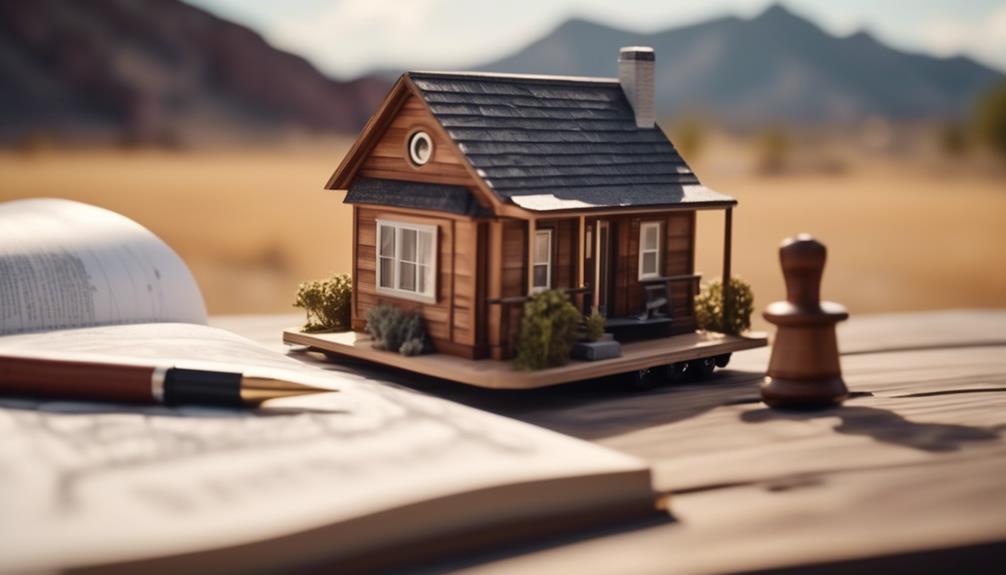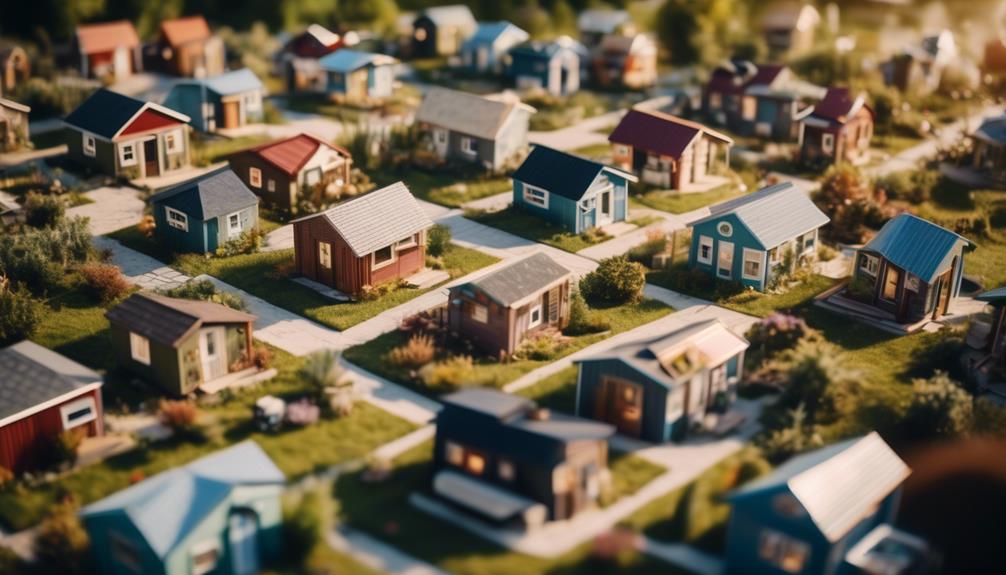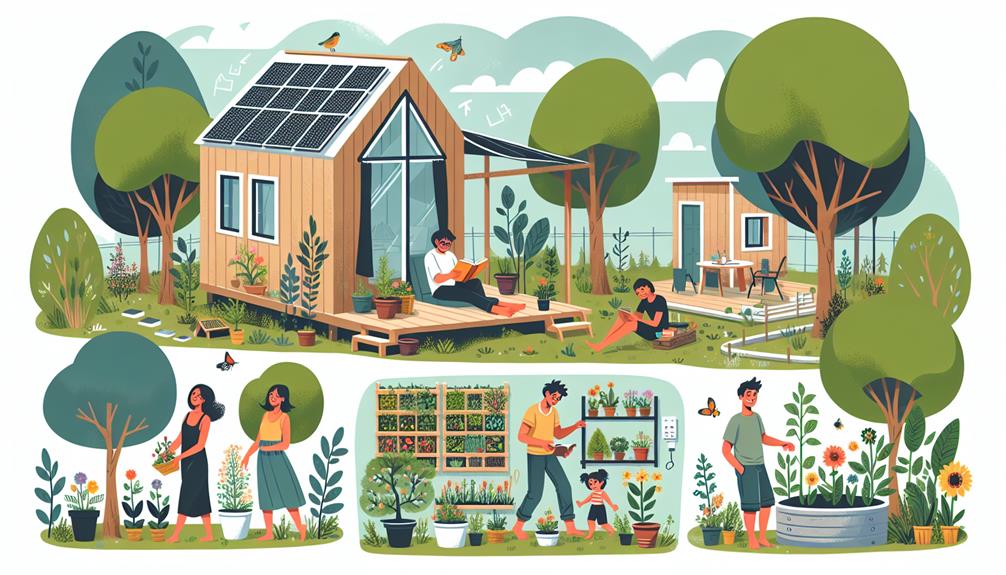As you traverse the terrain of tiny living, you'll uncover a unique universe where simplicity meets sustainability. You've likely heard the buzz about tiny homes, those quaint quarters that promise a minimalist lifestyle and financial freedom. But beyond the charm and cost savings, there's a complex world of design decisions, legal landscapes, and lifestyle adjustments to navigate.
In this comprehensive guide, you'll find the keys to unlock the mysteries of constructing or choosing your diminutive dwelling. Whether you're a seasoned minimalist or just curious about compact living, the journey ahead will reveal how to tailor a tiny space to your life—a topic rich with detail and ripe for exploration, lingering at the intersection of dream and practicality.
So, what exactly should you consider before taking the leap into less square footage?
Key Takeaways
- The Tiny House Movement promotes a minimalist lifestyle and offers a practical solution for reducing environmental impact.
- Designing a tiny home involves considering legal constraints, incorporating space-saving features, determining budget, and prioritizing amenities.
- It is important to research local codes and regulations, adhere to DOT standards, secure necessary permits, and ensure compliance with legal frameworks for trailer design when building a tiny home.
- Downsizing and embracing a minimalist lifestyle involves evaluating possessions critically, designing multifunctional spaces, integrating innovative storage solutions, and focusing on quality over quantity in purchases and experiences.
The Tiny House Movement
The Tiny House Movement champions a minimalist lifestyle, offering a practical solution for those seeking to reduce their environmental footprint and declutter their lives. Embracing tiny house living means prioritizing functionality in a small space, optimizing every square inch for efficiency and purpose.
This innovative approach not only simplifies your life but also contributes to a sustainable future. By building tiny houses to IRC standards, you're investing in a durable, long-lasting home, minimizing waste and resource consumption.
The tiny living philosophy intersects with cutting-edge design, ensuring that your compact residence doesn't compromise on safety or style. As you join the movement, you'll discover that tiny house living isn't just a trend—it's a conscientious choice for a streamlined, eco-friendly existence.
Designing Your Tiny Home
When designing your tiny home, carefully consider a variety of layout options and personalized features to ensure your limited space meets all your living needs efficiently. Prioritize the amenities and features that align with your lifestyle, and make innovative choices to maximize your space. Here are some key things to consider:
| Consideration | Details | Impact on Design |
|---|---|---|
| Legal Constraints | Research local tiny house codes | Dictates size and build |
| Space-Saving Features | Multi-functional furniture | Enhances interior design |
| Budget | Determine affordability | Guides material selection |
Legal Considerations

Navigating the legal landscape is crucial as you embark on building your tiny home, with regulations varying significantly from state to state. You must adhere to Department of Transportation (DOT) standards when constructing a tiny house on trailers, considering state-specific permit requisites. These legal considerations directly influence the size and design constraints of your build.
Carefully examine local regulations to ensure you secure the necessary permits and possibly a Commercial Driver's License (CDL) operator for transportation. Innovative trailer design options must align with legal frameworks to guarantee your tiny house meets all compliance benchmarks.
Diligent attention to these details will save you time and potentially thousands of dollars by avoiding legal pitfalls during the building and habitation of your tiny home.
Lifestyle and Downsizing
While meticulously adhering to legal requirements paves the way for your tiny home's construction, embracing a minimalist lifestyle through downsizing becomes the next crucial step in your journey toward sustainable living. Downsizing to a tiny house isn't just about living in a smaller space; it's about having everything you need and nothing you don't. This shift towards a tiny house lifestyle means prioritizing what truly adds value to your life.
- Evaluate possessions critically; keep only what serves a purpose or sparks joy.
- Design multifunctional spaces to maximize utility per square foot.
- Integrate innovative storage solutions to declutter and organize.
- Embrace digital solutions to replace physical items, when possible.
- Focus on quality over quantity in both purchases and experiences.
Tiny Home Ownership Options

Exploring tiny home ownership offers a myriad of options, from investment opportunities with short-term rentals to affordable, minimalist living without the burden of hefty loans or taxes. When you're ready to start building, consider the innovative design possibilities within the common dimensions and regulations specific to tiny houses.
Precision in planning reduces building time, ensuring your new home is both sustainable and compliant. Built to last a lifetime, tiny homes adhere to IRC standards and pass rigorous internal inspections, promising durability in your investment.
With the convenience of finding tiny homes for sale near you, living in a tiny house isn't just a trend—it's a strategic, long-term housing solution that embodies both economic efficiency and inventive design.
Frequently Asked Questions
What Are 3 Negative Features of a Tiny House?
You'll face space constraints, limited storage, and zoning challenges with a tiny house. These downsides can lead to privacy issues and a social stigma, despite the innovative appeal of minimalist living.
What I Need to Know About Building a Tiny Home?
You'll need to navigate zoning laws, select sustainable materials, and tackle design challenges. Familiarize yourself with building codes and explore customization options to innovate and detail your tiny home's construction effectively.
What Is the Difference Between a Small House and a Tiny House?
You're comparing space: small houses exceed 500 square feet, while tiny houses don't. Embrace a lifestyle shift with design constraints, mobility options, and zoning challenges that tiny living uniquely presents.
How Well Do Tiny Homes Hold Their Value?
You'll find that tiny homes generally maintain value, resisting market trends and depreciation factors due to their investment potential, but resale challenges and customization impact can vary based on your home's location and design.
Conclusion
You're ready to embark on the tiny house odyssey, armed with a trove of wisdom.
Picture your life, streamlined like a sleek, futuristic vessel, every inch optimized for function.
You've navigated legal mazes, embraced minimalism, and tailored a micro-abode that defies the excess of yesteryears.
It's not just a home; it's a revolution in living.
So seize your blueprint for simplicity—your journey to less is the secret map to more.

